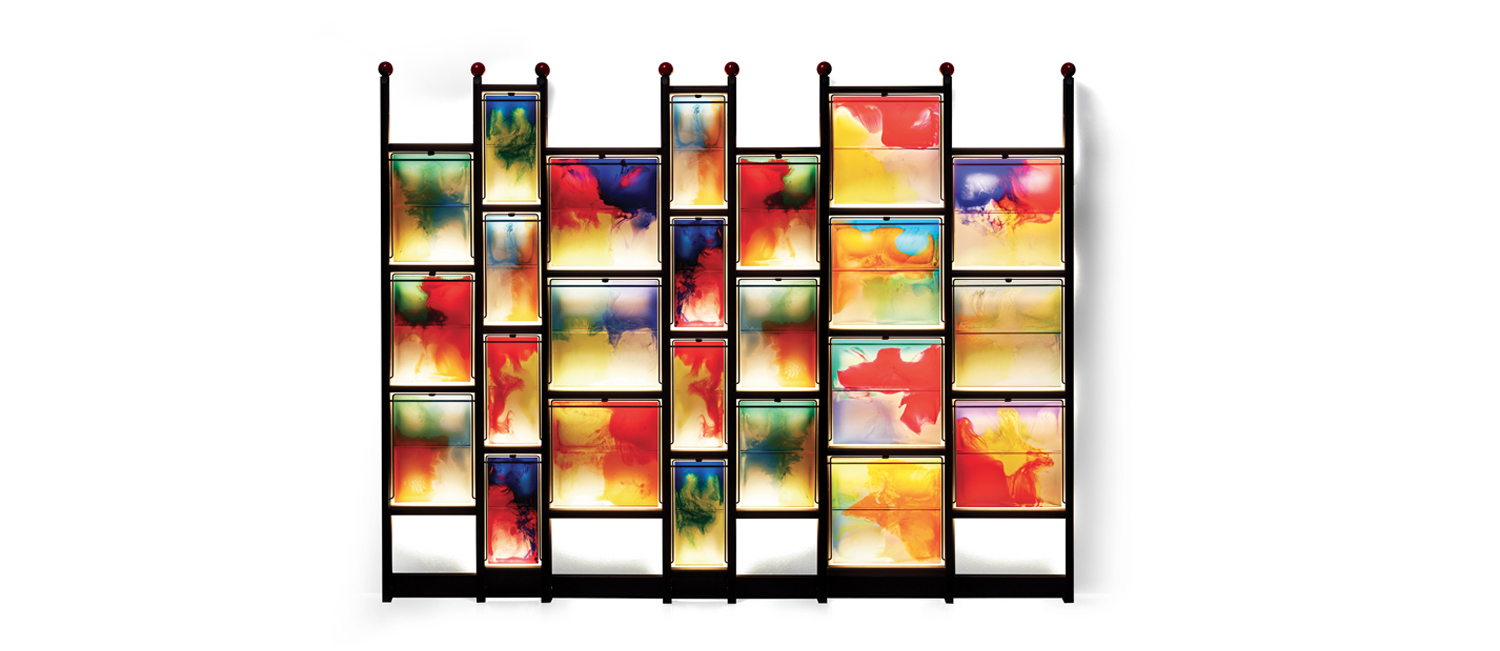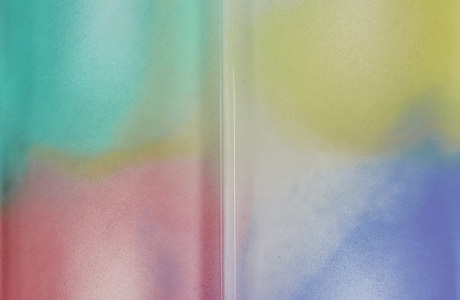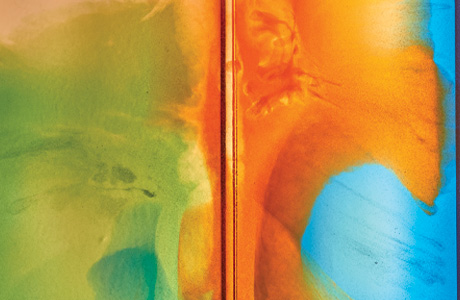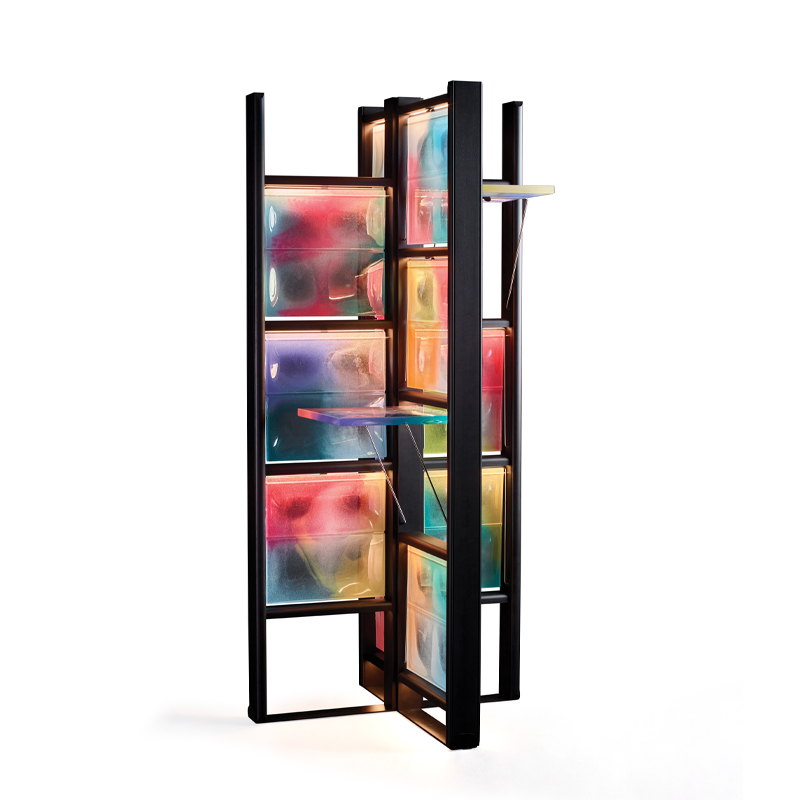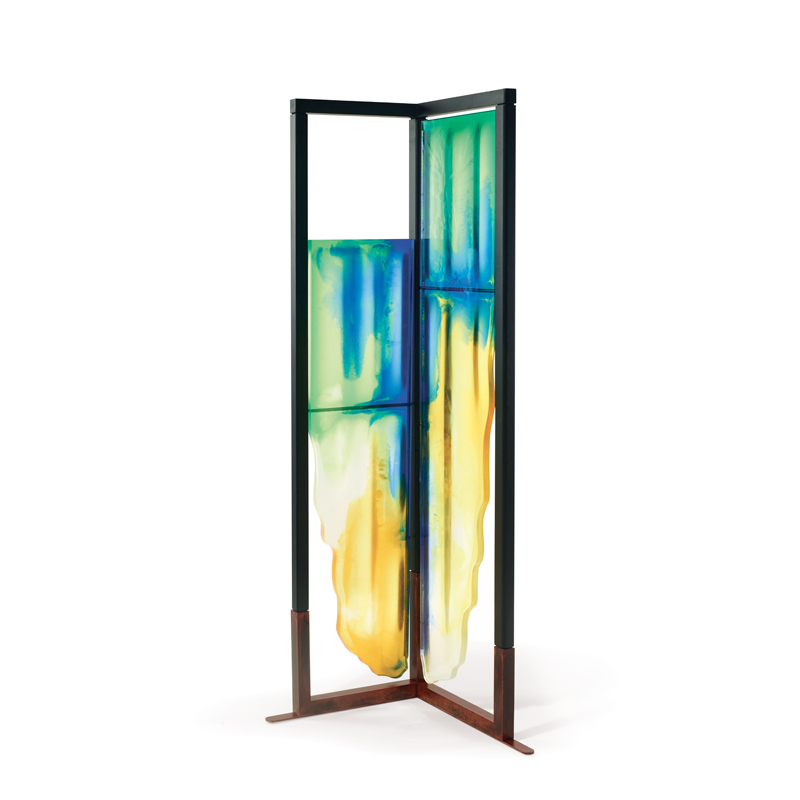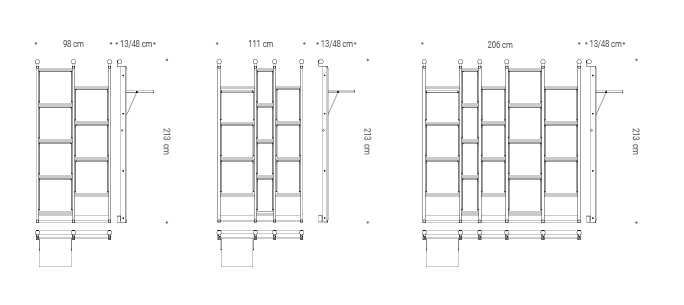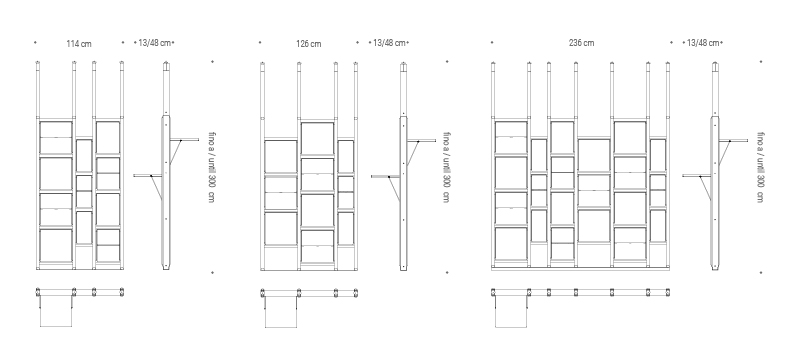To hybridize and illuminate.
These are the two main actions deployed by Romeo Sozzi and Bottega Ghianda when they decided to reissue the historic Luigi (o mi amate voi) bookcase that Gaetano Pesce had designed and made in 1982.
Hybridization manifests itself in the choice to combine the black-stained beech wood structure (like in the prototype) with coloured borders shelves in resin, which is treated with the care, rigour and value traditionally reserved for the most precious wood types. Illumination comes from the choice to house a LED light within the wooden structure, in order to create a luminous wall, or theatrical backdrop. The irregular resin mixtures combine with the rigour of the wooden structure that frames them through a network of squares and rectangles that recall the works of Mondrian.
Product Details
Technical specifications
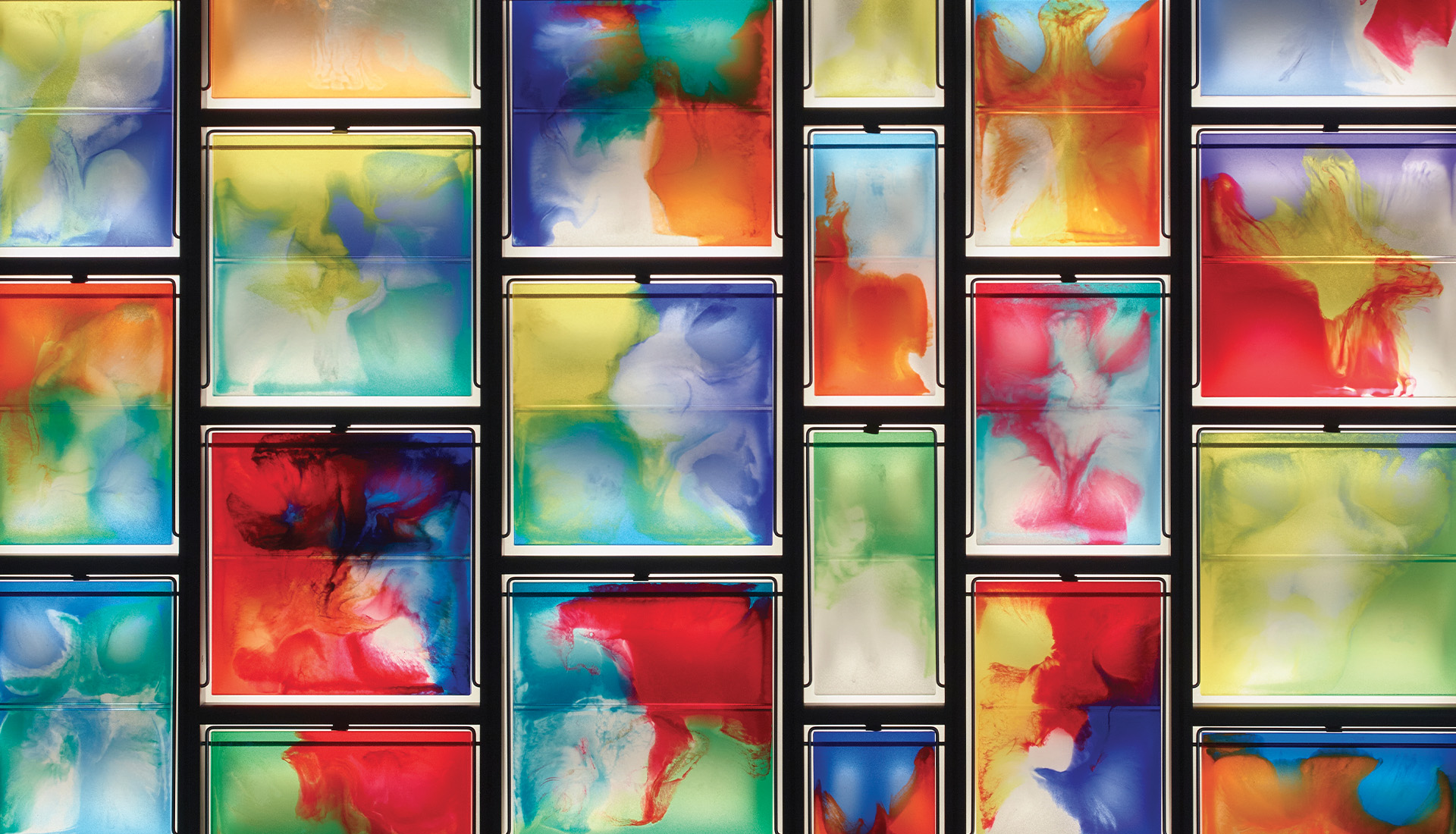
The making of
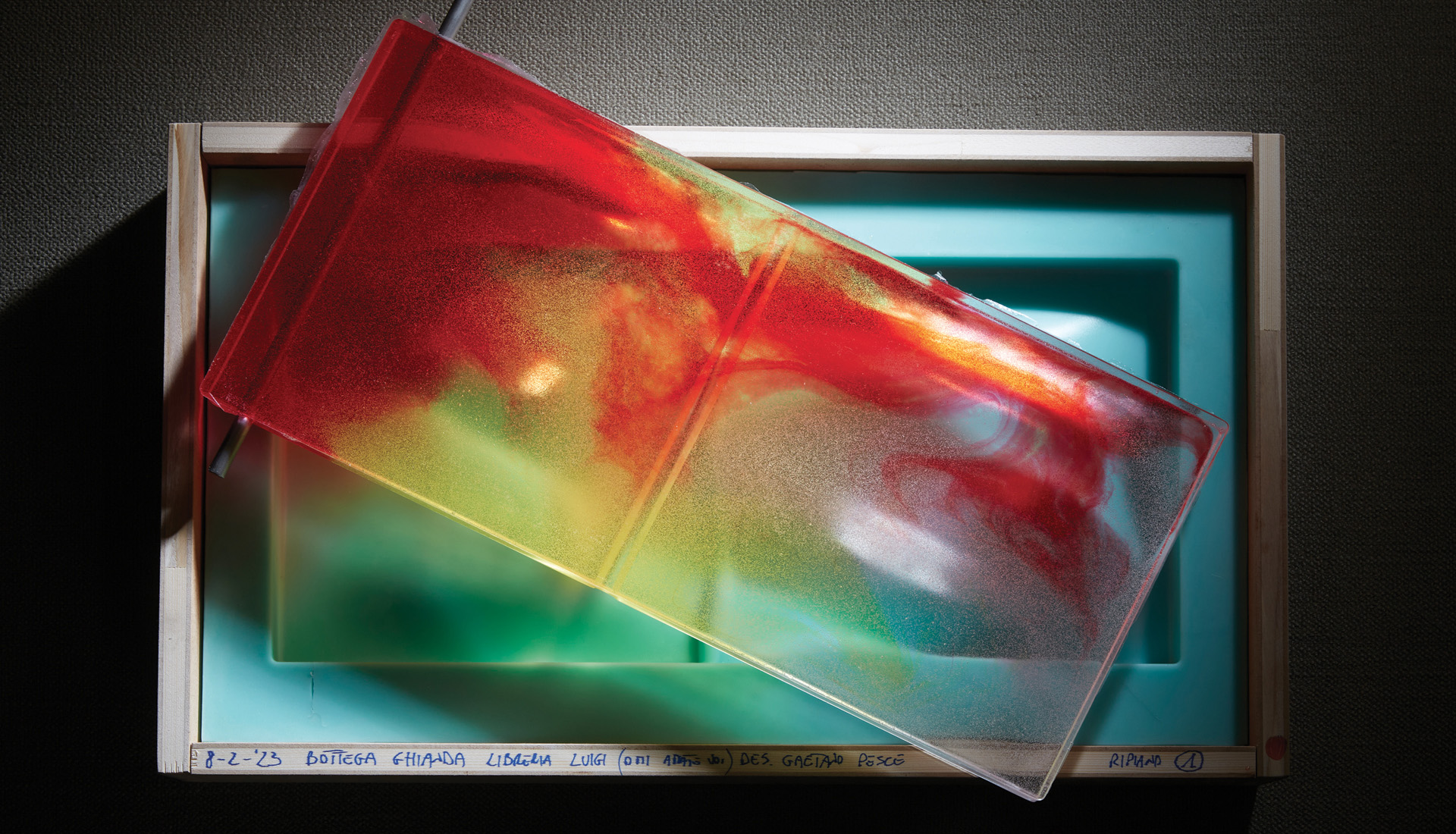
Essence and finishings
Bottega Ghianda carefully selects the quality of materials such as essences, leathers and fine fabrics that make each product unique.
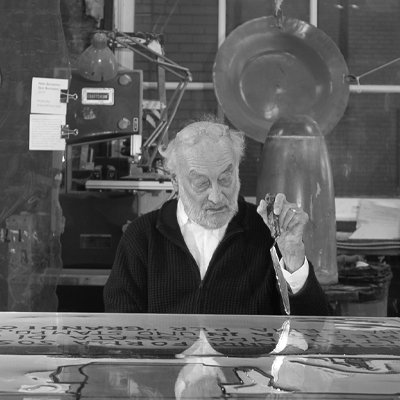
Gaetano Pesce
During his career, that spans four decades with commissions in architecture, urban planning, interior, exhibition and industrial design, Gaetano Pesce, the architect and designer, has conceived public and private projects in the United States, Europe, Latin America and Asia.
In all his work, he expresses his guiding principle: that modernism is less a style than a method for interpreting the present and hinting at the future in which individuality is preserved and celebrated.
Born in La Spezia, Italy, in 1939, Pesce studied Architecture at the University of Venice between 1958 to 1963 and was a participant in Gruppo N, an early collective concerned with programmed art patterned after the Bauhaus.
He taught architecture at the Institut d’Architecture et d’Etudes Urbaines in Strasbourg, France, for 28 years, at the Carnegie Mellon in Pittsburgh, at the Domus Academy in Milan, at the Polytechinc of Hong Kong, at the Architectural School of Sao Paulo and at the Cooper Union in New York City, where he has made his home since 1980, after living in Venice, London, Helsinki and Paris.
Pesce’s work is featured in over 30 permanent collections of the most important museums in the world, such as MoMa of New York and San Francisco, Metropolitan Museum in New York, Vitra Museum in Germany, Victoria and Albert Museum in London, Pompidou Center and Musee des Arts Décoratifs of Louvre in Paris; he exhibits art in galleries world wide.
His Award Winning designs include the prestigious Chrysler Award for Innovation and Design in 1993, the Architektur and Wohnen Designer of the Year in 2006 and the Lawrence J. Israel Prize from the Fashion Institute of Technology in New York in 2009.
